Cut down your driving costs with these easy and efficient money-saving tips.
Tyre maintenance, roadworthy checks and when to replace them
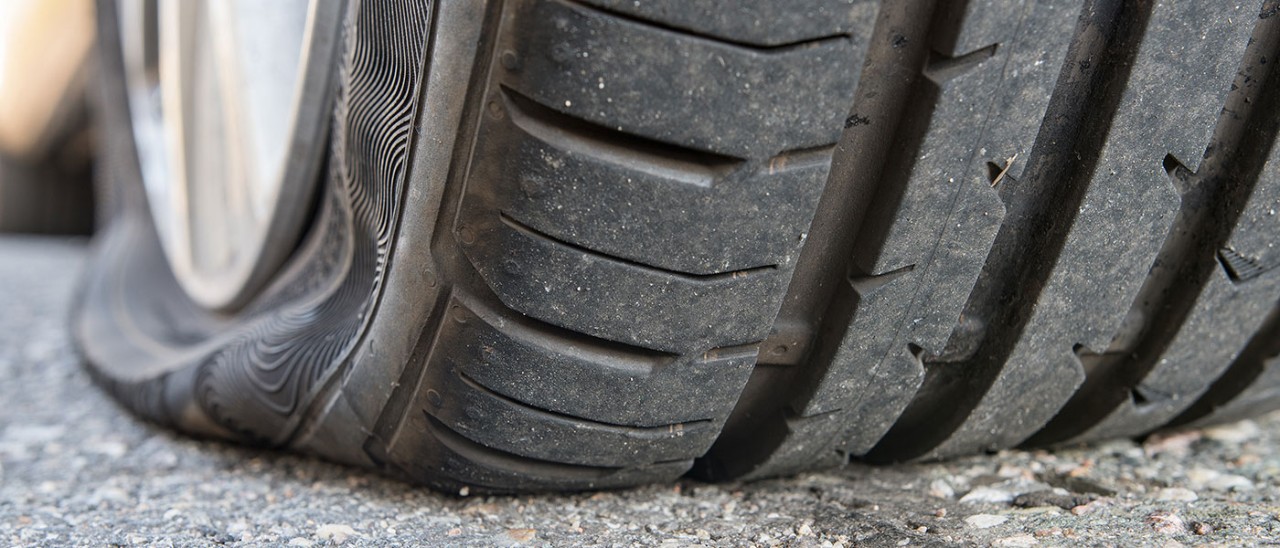
This guide to easy DIY car tyre maintenance, roadworthy safety checks and when tyres need replacing aims to help you stay safe on the road and save money in the long run.
Tyres are your car’s contact point with the road, so ensuring your tyres are in good condition and replacing them well before they’re unroadworthy is crucial to keeping you and everyone else on the road safe.
Regularly checking your car tyres’ overall condition and maintaining tyre pressure at the recommended level can help reduce the safety risks associated with poorly inflated, worn or damaged tyres, as well as help reduce running costs.
“Motorists driving on poorly maintained or worn tyres can compromise their vehicle’s grip and handling, especially on wet or poorly surfaced roads,” says RACV Regional Manager Automotive Services Phil Mack. “In some cases, the difference between a safe stop and a serious collision can come down to just a few millimetres of tyre tread.”
Here’s a handy guide to car tyre maintenance, roadworthy checks and when it’s time to replace them.
Are you up to date on your driving knowledge?
- Victoria’s new drink driving laws and the penalties for breaking them
- The most misunderstood road rules in Victoria
- Road safety around schools – what everyone needs to know
- Understanding mobile phone road rules in Australia
- Give way road rules in Victoria to navigate intersections
- What does a yellow traffic light mean?
- How to read parking signs in Victoria
- How to safely reverse your car and tips for reverse parking
Guide to tyre maintenance and safety
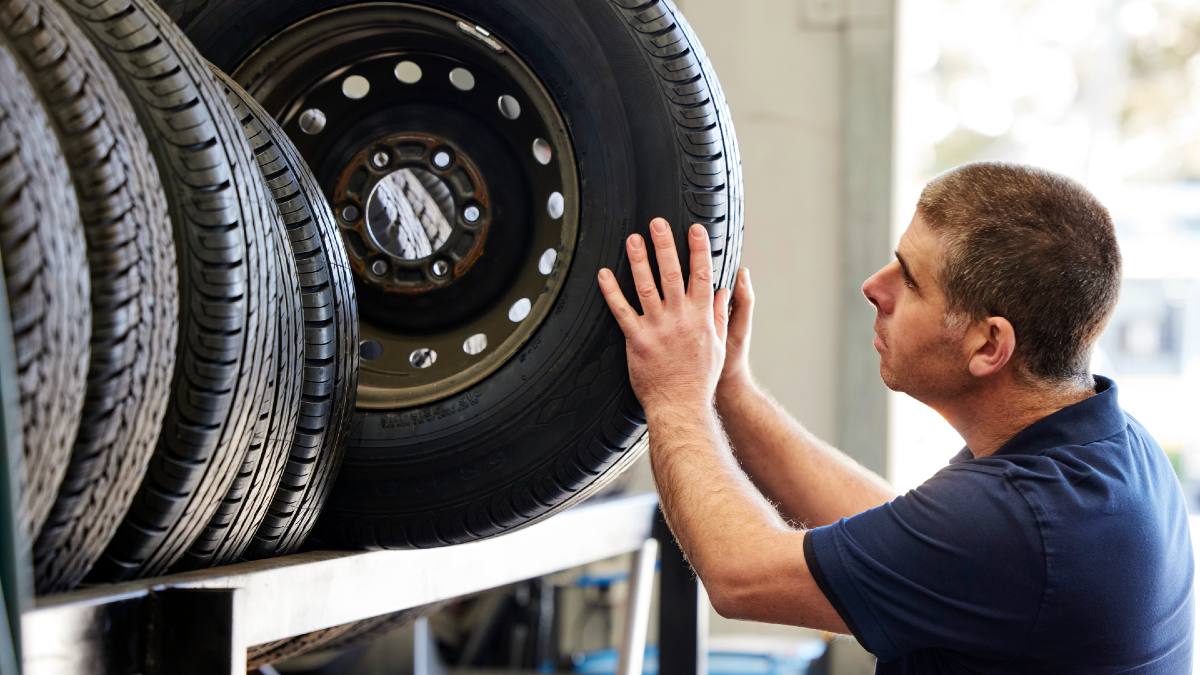
If you have any doubts about the condition of your car’s tyres, even if they have a legal tread depth, speak to a qualified service technician.
When do a car’s tyres become unroadworthy?
In Victoria and other states and territories in Australia, car tyres must be constructed and certified for normal road use and must have a minimum tread depth of 1.5mm in the primary (or ‘principal’) grooves, except at the tread wear indicators.
Tread wear indicators are little rubber blocks that protrude from the low point in the primary tyre grooves. These major grooves are the wide channels normally located in the centre portion of the tyre, but they might also run across the tread.
As Transport Victoria explains, the tyre’s tread must not be worn to the extent that any tread wear indicator contacts the road surface at any point. A tyre must also not have excessive uneven wear across its width, which can stem from wheel misalignment.
A tyre becomes unroadworthy when the tread depth in the primary grooves is less than 1.5mm. This does not apply to the secondary grooves that normally run from the centre (crown) of the tyre to the shoulders.
Motorists are urged to replace tyres before they reach the legal limit. If the tread gets close to the indicators, it’s time to change that tyre. Some tyre companies recommend replacing tyres once the depth reaches 3mm, which helps ensure optimal grip in wet weather and other slippery conditions.
More: Driving safely in fog, rain, snow, and poor-visibility conditions
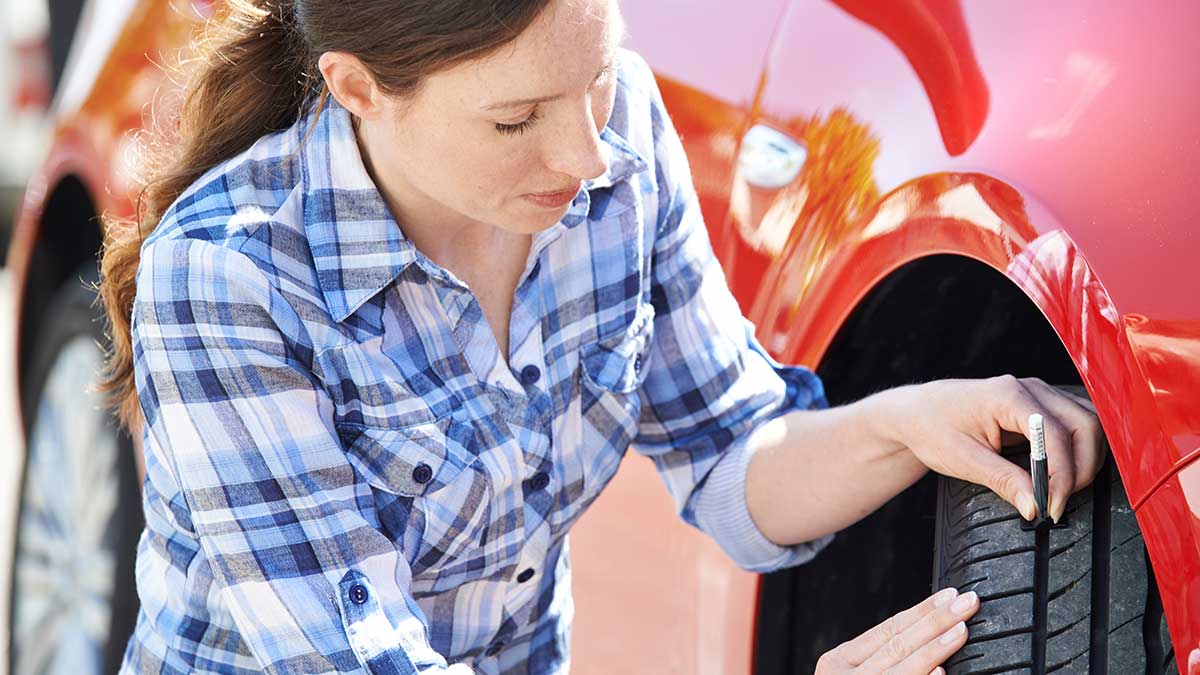
Tyre tread depth gauges are generally inexpensive and easy to use, helping you determine whether your car’s tyres are roadworthy and when they need replacing.
How to check a car tyre’s tread depth
Measuring the tread depth on your car’s tyres – and those on a caravan, boat or trailer, if you’re towing a load – is a simple task that should be performed regularly with other routine maintenance checks.
An accurate measurement can be obtained using a tyre tread depth gauge, which is an inexpensive tool found in auto parts and some hardware stores that is specially designed to measure tread depth.
To use, you simply place the probe in the tread groove and press down to get a precise reading. This should be more reliable than other basic methods of checking the tread depth and can be especially useful if a tyre has uneven wear.
Some motorists use a 20-cent coin, inserting it into the tread with the bill of the platypus pointing down. If the tread doesn’t reach the bill (which is about 3mm from the coin’s edge) the tyre may need replacing. However, this is only a basic indicator and not an accurate measure, so shouldn’t be relied upon.
If you’re in any doubt, seek the advice of a professional tyre fitter or qualified mechanic, such as those at RACV Accredited Auto Care Centres.
More: Easy DIY car maintenance and safety checks
Check for uneven tyre wear and damage
As well as measuring the tread depth, it’s also important to regularly check your car and trailer tyres for any bulges, cracks, cuts in the sidewall or other damage that could render the tyre unroadworthy and make your car unsafe to drive.
Check the entire contact surface of the tyre, including the centre and the inner and outer edges. You can get a good look at the inner surface by putting your steering wheel on full lock to expose the inside edge.
As well as looking for tyre damage or defects, check if there’s any uneven wear on your tyres, which could indicate issues with wheel alignment, the car’s suspension or tyre inflation. It can also point to stresses placed on the tyres under certain driving situations, such as towing, and should be assessed by a qualified professional.
If you detect any major warning signs such as those we’ve listed, the tyre should be removed from the vehicle or trailer. You can seek immediate help from your emergency roadside assistance service or, if the car is still in a roadworthy condition, contact your nearest service centre or tyre retailer for professional advice and assistance.
All tyres degrade over time, even if you don’t travel many kilometres each year, so keep a record of when you last replaced your car tyres and seek professional advice on whether it’s time for a replacement set if they’re more than five or six years old – even if there are no visible signs of damage or deterioration.
You can determine a tyre’s age by checking the date of manufacture on the sidewall. There should be identification markings known as the DOT code, which includes four digits that show the week and year of manufacture (4022 means the 40th week in 2022, for example).
More: How to buy the best tyres for your car: size, type, cost and care
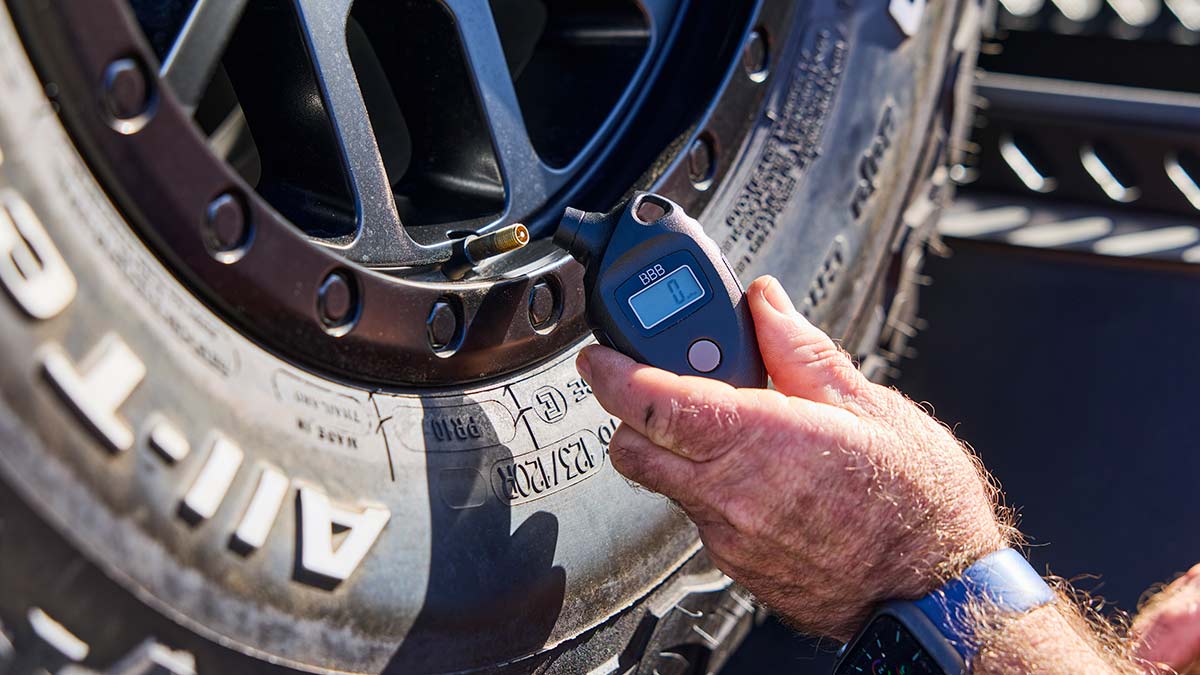
Regularly checking tyre pressure levels, including the spare and those on a van or trailer, is a vital part of tyre maintenance. Image: Matt Harvey
Check your car’s tyre pressure levels
Driving with tyres that are not properly inflated, according to the vehicle manufacturer’s recommended levels, can increase tyre wear and negatively impact the car’s dynamic safety, including handling and braking. It can also increase fuel consumption.
It’s important to check tyre pressure as part of your regular car tyre maintenance routine, preferably at least every fortnight and always before a long trip.
The carmaker’s recommended tyre pressure levels – including when towing – should be listed on a placard that’s usually located on the door jamb inside the driver’s or front passenger's door. Some cars also have the placard in other locations, such as the glove box or fuel filler lid.
Even if you have a tyre pressure monitoring system (TPMS) in your car, having an accurate tyre gauge on hand is recommended. This allows you to easily double-check the pressure when using a public air compressor at a service station or your own personal compressor at home.
If you’re planning a long-distance road trip or heading off-road in a 4WD, it’s also a good idea to have your own portable air compressor. Some conditions, such as driving on sand where permitted, may require tyre pressures to be lowered, for example, so your own private air supply will be needed.
More: 8 essential things you need for a safe off-road adventure
Best tips for checking tyre pressure
Checking your car’s tyre pressure levels should be a straightforward task, but here are some guidelines for getting an accurate reading:
- Check the pressure when the tyres are cold or cool (tyres warm up quickly when driving).
- Use a quality tyre gauge, whether digital, dial (analogue) or stick type.
- Place the tyre gauge securely on the valve to check the pressure (repeat the process if air escapes) and check again after making any adjustments.
- Seek out a regularly calibrated air compressor at a reputable service station.
- Account for vehicle load and conditions, as recommended by the car manufacturer.
- Always check all four tyres on the car and don’t forget to check the spare tyre (if fitted).
- Don’t forget to check the tyres on your caravan or trailer, including the spare here too.
- Take care to refit the tyre valve’s screw-on dust cap, making sure no dirt or other debris gets in, as this can cause leaks.
More: How to check your tyre pressure and recommended inflation
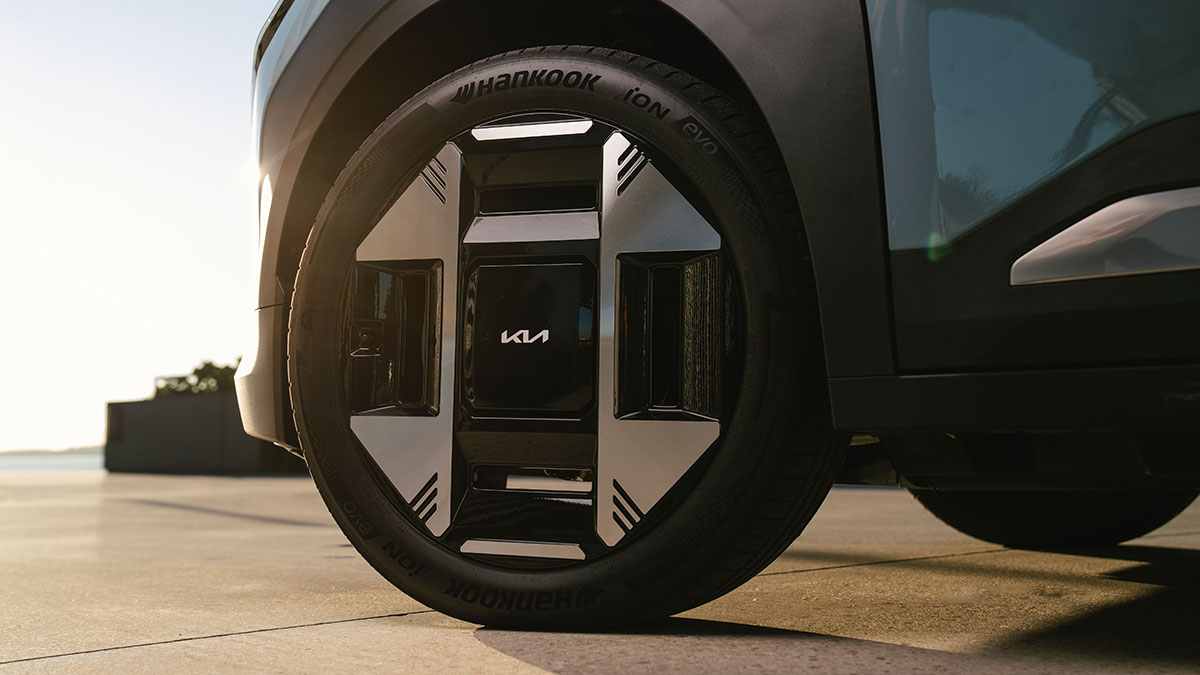
Like most EVs, the Kia EV3 is fitted with a puncture repair kit instead of a spare tyre. This is despite having room in the boot for a space-saver tyre.
Run-flat tyres, space-saver spares and inflation kits
Many modern cars do not carry a full-size spare tyre and may not have a fifth wheel and tyre at all. Some use run-flat tyres, which still require all the regular tyre maintenance and safety checks but are designed to temporarily support the vehicle if pressure is lost.
Rather than carrying a spare, run-flat tyres rely on a tyre pressure monitoring system (TPMS) to alert you when there’s a problem. They allow you to continue driving where possible at a reduced speed (for example, up to 80km/h) in order to get to a service or repair centre.
Space-saver spare tyres are also commonly found in modern cars and must also be carefully maintained, often requiring higher pressure levels than regular tyres. These are also designed to only be used at lower speeds and temporarily while the damaged full-size tyre is repaired or replaced as soon as possible, however RACV roadside patrols have seen cases where they are fitted for extended periods. This can compromise safety and could lead to costly replacement (space-savers can be more expensive than regular tyres).
Other cars, including most electric vehicles sold in Australia, may have four regular tyres but no spare tyre at all. Instead, the car typically has a puncture repair kit comprising a small portable air compressor and sealant. These are designed to reinflate a flat tyre caused by a small puncture, allowing you to then travel to a specialist tyre fitter or service centre.
More: The best tyres for electric cars (and what makes EV tyres different)
Significant tyre damage, such as to the sidewall, may require emergency roadside assistance, with the likelihood of the car being towed to a repairer if there is no replacement tyre readily available.
Before heading out on the road, it’s important to be well prepared and to know what to do if you encounter a problem with your car’s tyres – including the spare. Pack an emergency car safety kit, update your emergency roadside assistance plan and, especially if you’re travelling in remote locations, consider having a suitable spare tyre (with tyre changing tools) and knowing how to change a tyre yourself.
More: What to do when your car breaks down – and who to call


